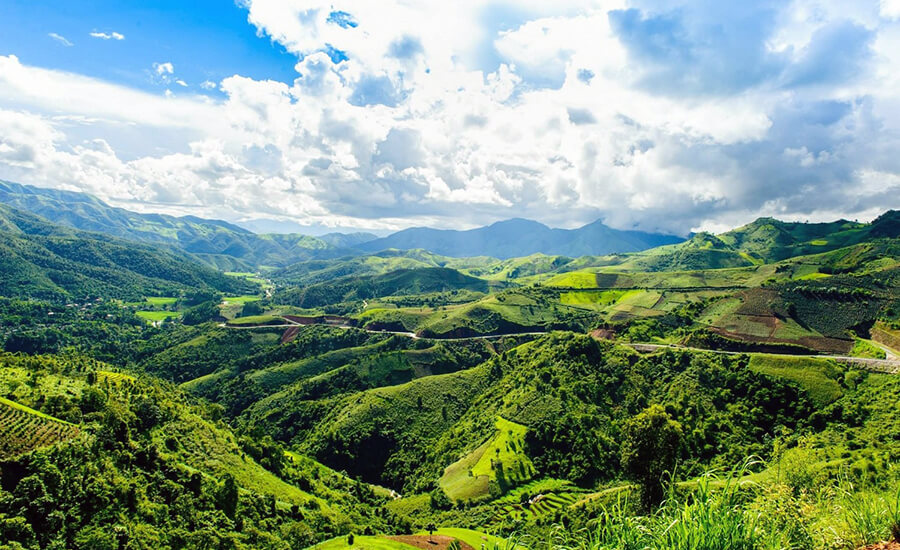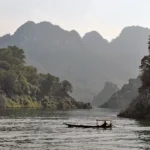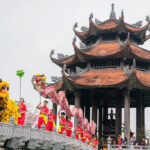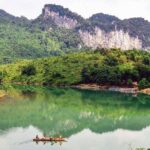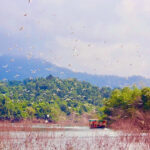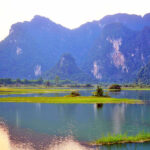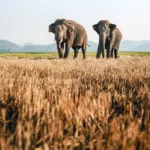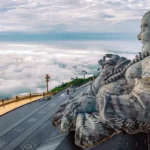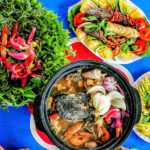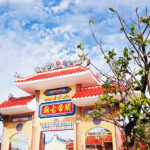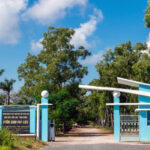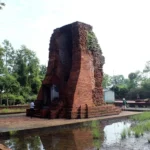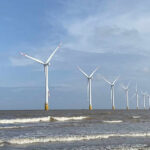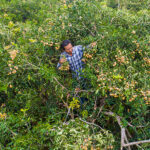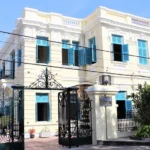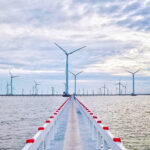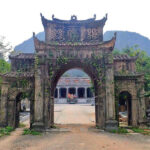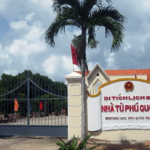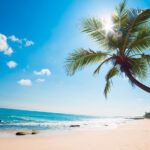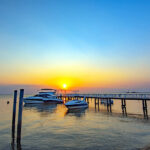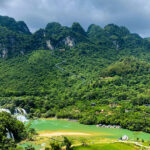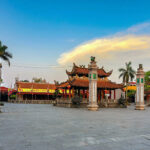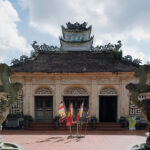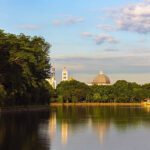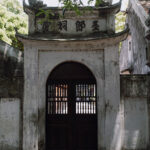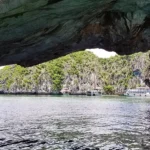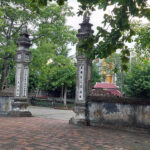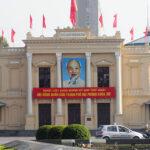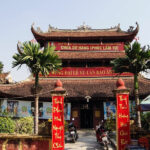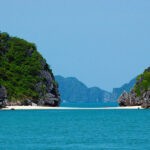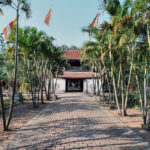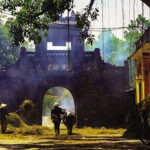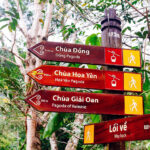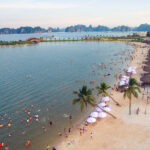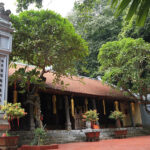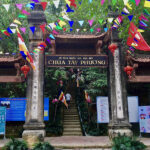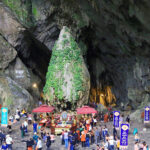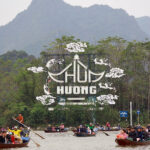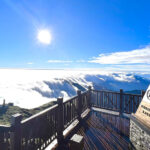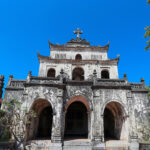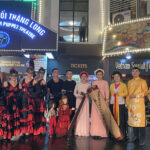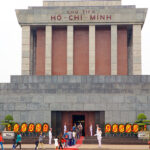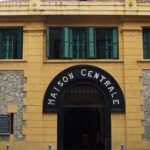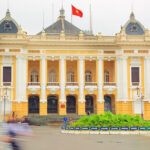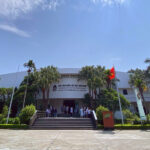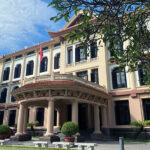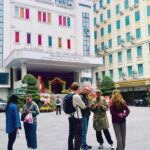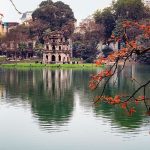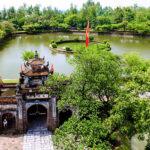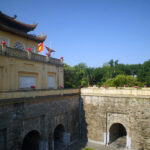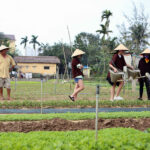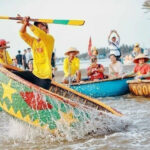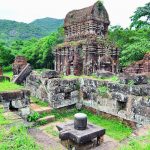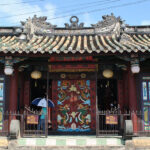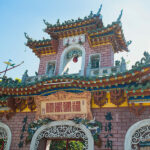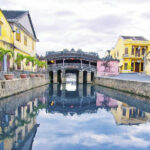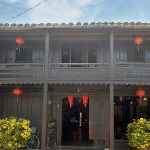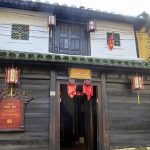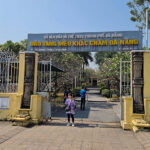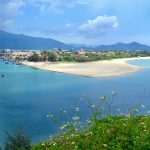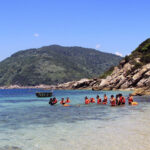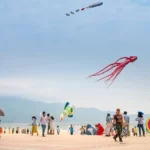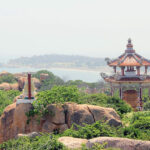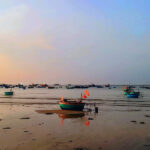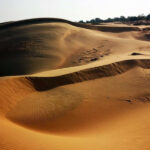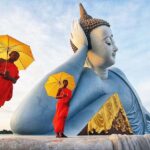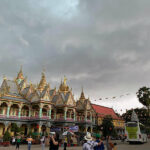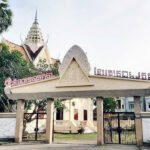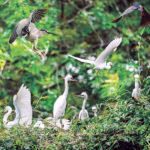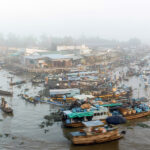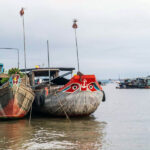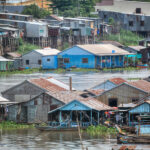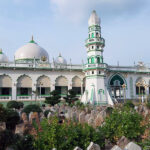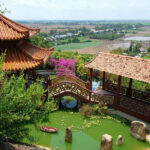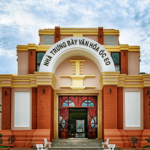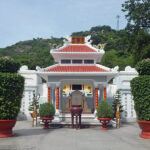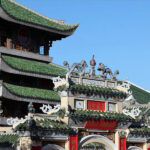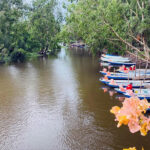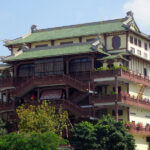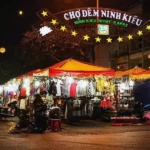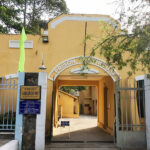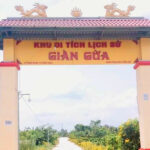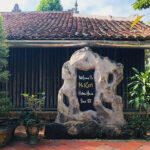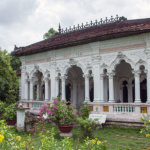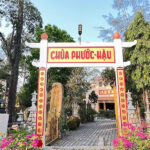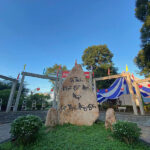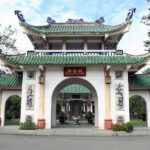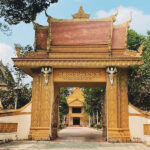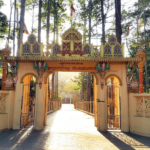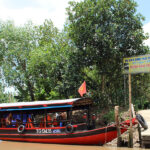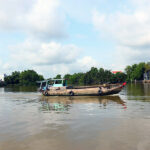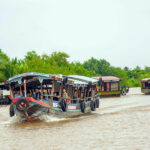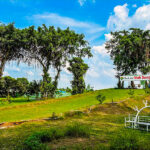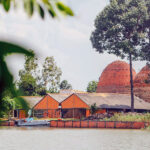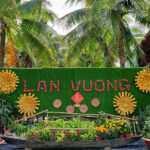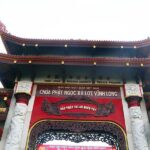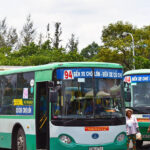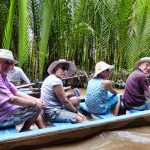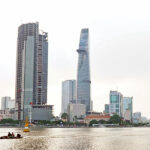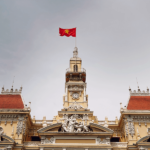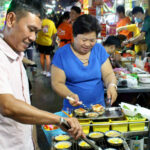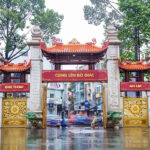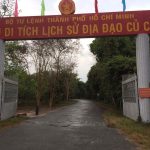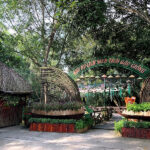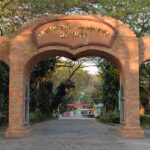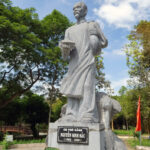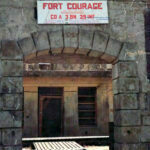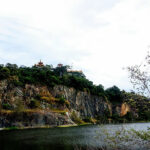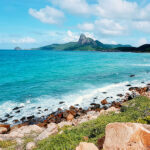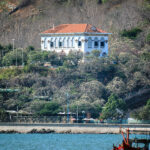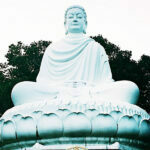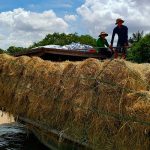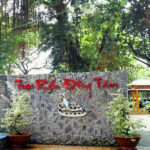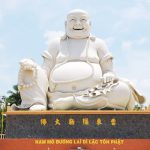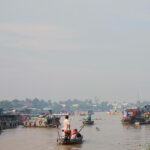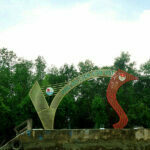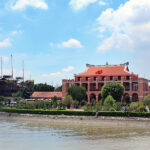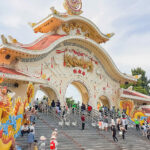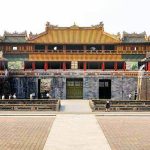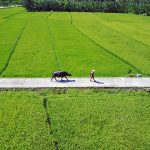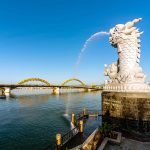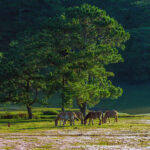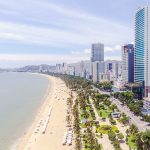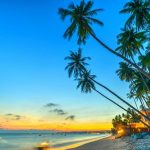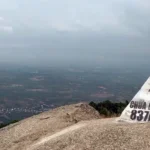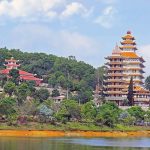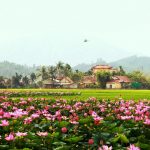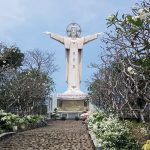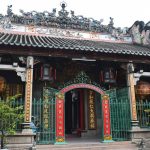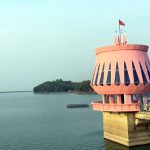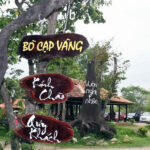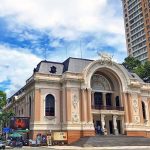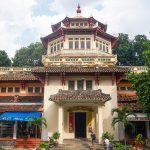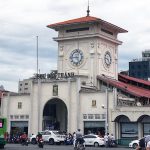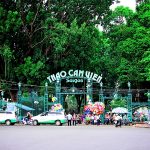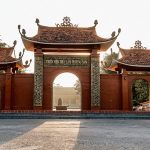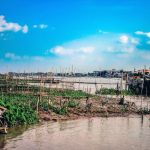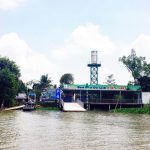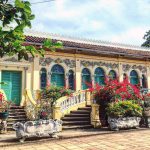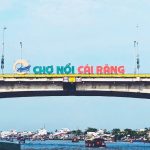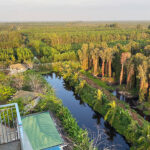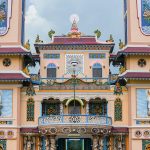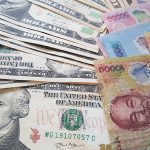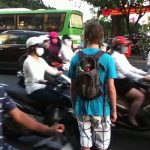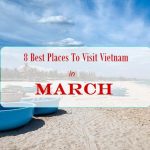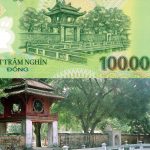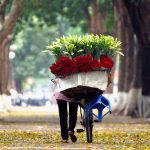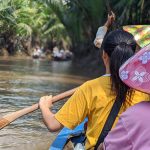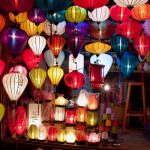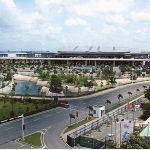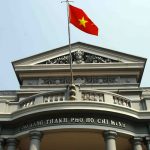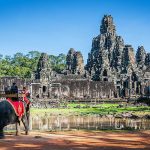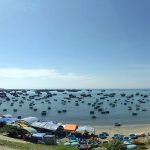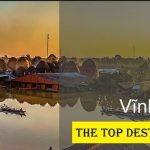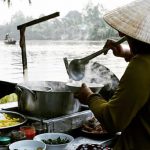Associated with the resounding victory in the Dien Bien Phu battle in 1954, Dien Bien – the westernmost land of Vietnam today attracts tourists not only by its rich treasure of historical and cultural relics, but also by its majestic, wild natural scenery and cultural features imbued with national identity.
Table of Contents
General information about Dien Bien
Dien Bien is about 500 km west of Hanoi, bordering Son La and Lai Chau. Dien Bien is the only province that shares a border with two countries, Laos and China, more than 400 km long.
Dien Bien has rich tourism potential, especially in the field of culture and history. The most prominent is the system of historical relics of Dien Bien Phu victory including the campaign headquarters in Muong Phang, the bases of Him Lam, Ban Keo, Doc Lap, the hills A1, C1, D1, E1 and the central area of the French base group (De Castries tunnel).
In addition, Dien Bien has many caves, mineral water sources and lakes, creating a rich source of natural tourism resources.
What’s the best time to visit Dien Bien?
Dien Bien has a tropical monsoon climate with high mountains, cold winters and little rain, hot summers with a lot of rain, affected by dry and hot westerly winds. The average annual temperature is from 21 to 23 degrees Celsius, the lowest temperature is about 13 degrees Celsius, the highest is about 25 degrees Celsius.
The best time to travel to Dien Bien is from March to May and from September to November, when the weather is favorable and the natural scenery is at its most brilliant.
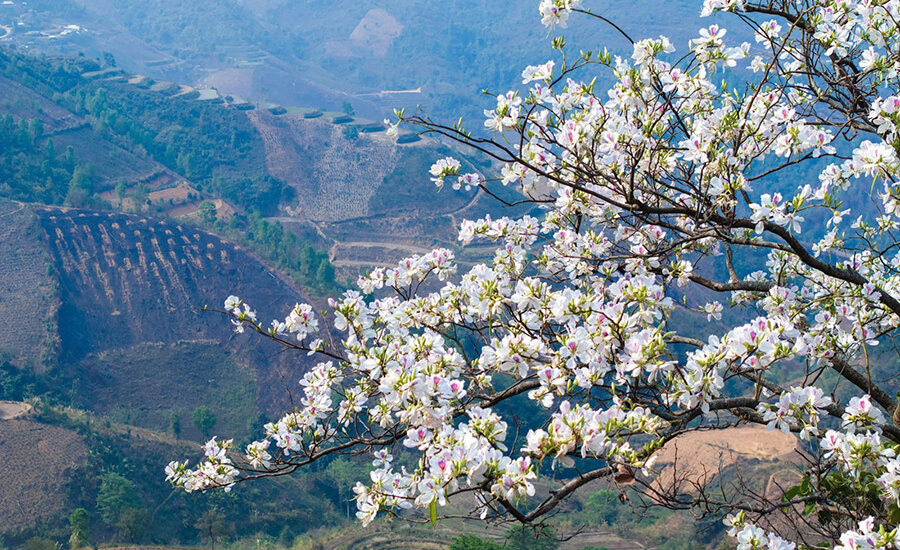
Bauhinia variegata flowers season.
Especially, from February to March, when the warm air of spring comes, the whole mountain forest of Dien Bien is covered in the white color of Bauhinia variegata flowers – the symbol of the Northwest. Exploring the Northwest route this season, visitors are overwhelmed by the pure white color of Bauhinia variegate flowers, from the yard, from the porch or beside the terraced fields, Bauhinia flowers bloom heavily in clusters.

terraced fields in Dien Bien.
In addition, if you have the opportunity to come to Dien Bien around August – September, visitors will admire the golden color of ripe rice on Muong Thanh field – the largest field in the Northwest region and the main rice granary of Dien Bien province. Looking down from above, the field is like a natural painting dyed yellow by the color of ripe rice and the gentle color of autumn sunshine.
How to get there?
Vietnam Airlines has direct flights from Hanoi to Dien Bien every day of the week. Visitors from Ho Chi Minh City can also fly with Vietnam Airlines, with a stop in Hanoi.
The road from Hanoi to Dien Bien Phu city is about 450 km long. Visitors can follow CT08, CT02, QL6 through Hoa Binh province or follow DT87, QL32, QL37 through Hoa Binh and Son La. Travel time is about 10 hours.
There are several bus companies running the Hanoi – Dien Bien route such as Nam Lien, Nam Oanh, Hai Van, Khanh Le, Cuong Tam, Chien Ha, ticket prices range from 300,000 VND to 350,000 VND. Buses depart from My Dinh station.
To get to Dien Bien Phu city, you must pass Pha Din pass – one of the four great mountain passes of Vietnam. Pha Din pass is located on the border between Thuan Chau, Son La province and Tuan Giao, Dien Bien province. The pass is 32 km long.
Accommodations in Dien Bien
Hotels in Dien Bien are mainly concentrated in Dien Bien Phu ward, with a variety of room types, from motels, homestays to 3-4 star hotels. Muong Thanh Dien Bien Hotel, Him Lam Hotel, Dien Bien – Hai Van, Phuong Nam, An Loc have room rates ranging from 700,000 VND to 1.2 million VND per night.
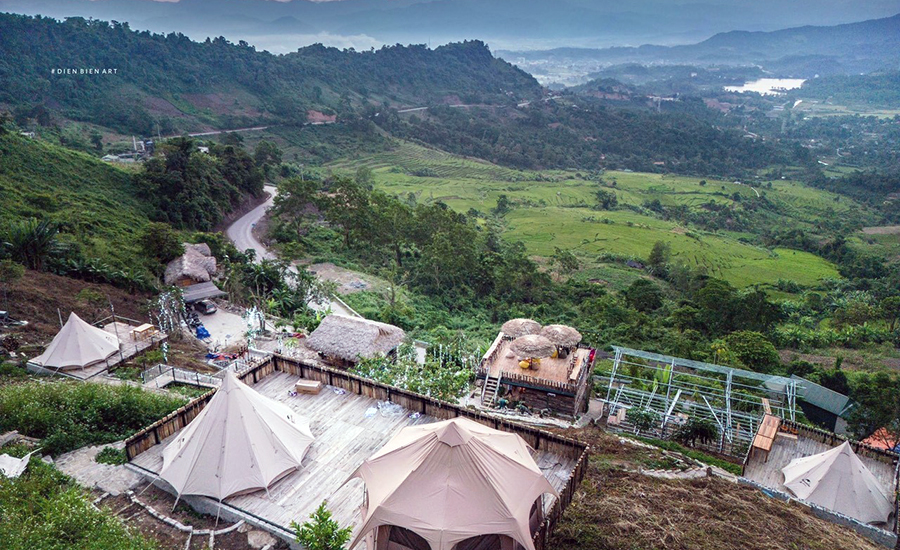
A view from a homestay in Dien Bien.
Motels in the ward center cost from 150,000 to 300,000 VND per night. Some homestays recommended by the Dien Bien Provincial Tourism Promotion Information Center include: Muong Then, Phuong Duc, Dien Bien – Rose Valley, Nang Ban.
Tourist attractions in Dien Bien
Dien Bien Phu Victory Monument Complex is an important part of the journey to visit historical destinations in Dien Bien province. Most of these places are located next to each other, so visitors can conveniently visit them in one session.
Dien Bien Phu Vestiges
Dien Bien Phu over, 474 km Northwest of Hanoi, is situated in the Muong Thanh plains and surrounded by high mountains. Dien Bien Phu was once the location of the battlefield where historical bombast between the Vietnamese People’s Army and the French Colonialists Expeditionary Corps took place.
The valley of Dien Bien Phu was 18 kilometers long and 6-8 kilometers wide when the Dien Bien Phu campaign began. To date, the valley spreads over 20km long. On 20 November 1953, French paratroopers occupied the valley and built 49 strongholds in three sub-sections. After the victorious battle of Dien Bien Phu in 1954, almost all historical sites of this battle lying to the east of Muong Thanh field, have been preserved intact. Among these sites include artillery emplacements remains of airplanes the Muong Thanh Bridge, the command bunker of De Castries, Hill A1, and the cemetery.
Following are a list of recommended places to visit in Dien Bien Phu.
The cemeteries in Hill A1 (644 tombs) and Doc Lap hill (2432 tombs)
This is the resting place of Vietnamese soldiers who sacrificed heroically in the Dien Bien campaign. In A1 hill lie the tombs of heroic martyrs such as To Vinh Dien, Be Van Dan, Phan Dinh Giot, and Tran Can.
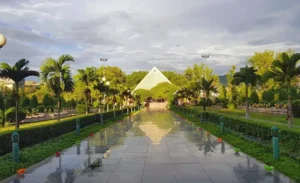 Hill A1: This height stands block the way to the northeast sub-section. It has a significant role, controlling the whole battle of Dien Bien Phu. During 36 nights and days, the fierce battle claimed the lives of 2516 Vietnamese soldiers. Only until the night of 6 May 1954 did Vietnamese soldiers win this decisive battle. At A1 hill today, besides sightseeing, visitors can also experience some practical activities such as cooking soldiers’ rice with Hoang Cam stove, pushing bicycles to transport necessities, listening to stories about the Dien Bien Phu campaign and the soldiers’ activities during combat.
Hill A1: This height stands block the way to the northeast sub-section. It has a significant role, controlling the whole battle of Dien Bien Phu. During 36 nights and days, the fierce battle claimed the lives of 2516 Vietnamese soldiers. Only until the night of 6 May 1954 did Vietnamese soldiers win this decisive battle. At A1 hill today, besides sightseeing, visitors can also experience some practical activities such as cooking soldiers’ rice with Hoang Cam stove, pushing bicycles to transport necessities, listening to stories about the Dien Bien Phu campaign and the soldiers’ activities during combat.
Muong Thanh airfield: this was the stronghold 206 and the central airport of the entrenched camp of Dien Bien Phu. Currently, this airport is renamed Dien Bien and becomes one of the destinations in the flight system of the Vietnam Civil Aviation.
 The Command bunker of The Dien Bien Phu entrenched camp: De Castries worked inside the bunker. The command bunker of General De Castries was built by the French colonialists in the center of the Dien Bien Phu stronghold, in the Muong Thanh field. The bunker is located about 1 km from A1 hill, and is known as “the most fortified bunker in Indochina”. Surrounding the bunker is a defensive fence with a dense barbed wire system and four tanks. The original shape and size, structure and arrangement of the bunker are kept intact. The bunker is 20 m long and 8 m wide, including four rooms used for both living and working of De Castries and his soldiers.
The Command bunker of The Dien Bien Phu entrenched camp: De Castries worked inside the bunker. The command bunker of General De Castries was built by the French colonialists in the center of the Dien Bien Phu stronghold, in the Muong Thanh field. The bunker is located about 1 km from A1 hill, and is known as “the most fortified bunker in Indochina”. Surrounding the bunker is a defensive fence with a dense barbed wire system and four tanks. The original shape and size, structure and arrangement of the bunker are kept intact. The bunker is 20 m long and 8 m wide, including four rooms used for both living and working of De Castries and his soldiers.
Him Lam Hill: on 13 March 1954, Vietnamese troops fought the first battle in Him Lam hill which is situated to the northwest of the valley.
Doc Lap Hill: Vietnamese troops liberated on the hill on 15 March 1954.
Hills C, D and E are well preserved. From afar, one can easily recognize the name of these hills. Atop D1 hill stands the newly-erected Statue of Dien Bien Phu Victory.
The Command post of the Vietnamese soldiers from January 21 to May 8, 1954: it is situated in a primitive forest in Muong Phang Commune. Here one will find the hut here General Vo Nguyen Giap worked and other huts for information and military operation discussion.
These are the historical sites of the 56-day and night fierce battle of Vietnamese troops and people which results in our glorious victory of Dien Bien Phu.
Museum of Dien Bien Phu Victory
 The museum of Dien Bien Phu victory lies opposite the cemetery of Vietnamese martyrs in Hill A1, which is now in the center of Dien Bien Phu City. The museum was built in 1984 in celbration of the 30th anniversary of Dien Bien Phu victory. By the end of 2003, the museum was upgraded and its exhibition sections reorgaized.
The museum of Dien Bien Phu victory lies opposite the cemetery of Vietnamese martyrs in Hill A1, which is now in the center of Dien Bien Phu City. The museum was built in 1984 in celbration of the 30th anniversary of Dien Bien Phu victory. By the end of 2003, the museum was upgraded and its exhibition sections reorgaized.
To date, the museum has five exhibition sections, featuring 274 items and 122 pictures, many of which are newly added about the 8-year resistance againts the French colonialists. The five sections have the following contents:
- The strategic location of Dien Bien Phu
- The enemy’s scheme at Dien Bien Phu
- The Party’s guideline regarding preparations for the Dien Bien Phu campaign.
- Impacts of Dien Dien Phu domestically and internationally
- Present-day Dien Bien Phu
The highlight here is the panorama painting with more than 4,500 characters, 132 m long, 20.5 m high, 42 m in diameter, 6 m in relief, and a total area of more than 3,200 m².

The painting was painted in oil on canvas from November 2019 and completed phase 1 in May 2021, with the participation of about 100 artists. The stages of the Dien Bien Phu Campaign in 1954 are shown continuously and impressively through each stroke.
Pha Din Pass
 Pha Din Pass is 32 km long, part of National Highway 6, and is the gateway to Dien Bien province. The highest point of the pass is 1,648 m above sea level, with a cliff on one side and a ravine on the other. This is also the starting point of the journey of pulling artillery and transporting food, weapons, and ammunition by human power by the Vietnamese army and people during the Dien Bien Phu campaign. Pha Din Pass is no longer as dangerous as before, the narrow roads have been widened, but there are still winding roads going up and down, and countless hairpin bends. On Pha Din Pass, there is the Pha Din Pass tourist area, which is a stop for tourists to rest and sightsee, and is also a place for people from Dien Bien and Son La provinces to meet.
Pha Din Pass is 32 km long, part of National Highway 6, and is the gateway to Dien Bien province. The highest point of the pass is 1,648 m above sea level, with a cliff on one side and a ravine on the other. This is also the starting point of the journey of pulling artillery and transporting food, weapons, and ammunition by human power by the Vietnamese army and people during the Dien Bien Phu campaign. Pha Din Pass is no longer as dangerous as before, the narrow roads have been widened, but there are still winding roads going up and down, and countless hairpin bends. On Pha Din Pass, there is the Pha Din Pass tourist area, which is a stop for tourists to rest and sightsee, and is also a place for people from Dien Bien and Son La provinces to meet.
Pa Khoang Reservoir
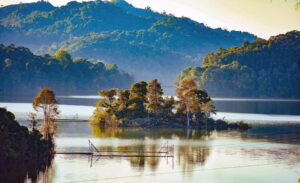 Pa Khoang Reservoir is a poetic destination in the middle of the mountains and forests, about 20km from the Dien Bien center. Initially, Pa Khoang was just a stream. However, when irrigation works were built, the stream became lovely lake with a system of drainage and watertight gates used to regulate the water running onto the thousands of hectares of rice fields.
Pa Khoang Reservoir is a poetic destination in the middle of the mountains and forests, about 20km from the Dien Bien center. Initially, Pa Khoang was just a stream. However, when irrigation works were built, the stream became lovely lake with a system of drainage and watertight gates used to regulate the water running onto the thousands of hectares of rice fields.
The lake has an area of about 600 hectares, surrounded by lush green primeval forests and Thai and Mong villages. Pa Khoang Reservoir is not only a place to provide irrigation water for Muong Thanh fields but also an ideal eco-tourism destination. Tourists to Dien Bien can take a boat to sightsee, fish, or relax in a peaceful space, completely separate from the hustle and bustle of life. In winter, fog covers the lake, creating a magical scene.
Tham Pua cave
Tham Pua Cave or Tham Bo Cave, also known as Ong Giap Cave, is located at the foot of Pu Hong Cay limestone mountain, in Ban Bo, Bung Lao commune. Tham Pua cave is untouched natural site. It is extemely large and deep with a height of 10m and it is comprised of many small crevices and tunnels. 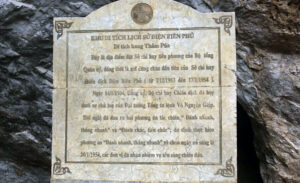 A big, even, flat rock stands in the middle of the cave like a large stable. Stalactites of various figures such as dragons, lions, phoenixes, elephants and beautiful orchids hang down from the walls of the cave.
A big, even, flat rock stands in the middle of the cave like a large stable. Stalactites of various figures such as dragons, lions, phoenixes, elephants and beautiful orchids hang down from the walls of the cave.
Tham Pua is not only a cave of natural beauty but also a place where stone axes, pestles and animal fossils have been found. It was listed among the national historical sites and it is becoming an attractive place for tourism
Tham Pua was also the first Command Post of Dien Bien Phu Campain (at the end of 1953 to the 18 January 1954). On the 14 January 1954, an important meeting of the Vietnamese Army to carry out the plan “quickly attack and quickly advance” took place in this cave.
Specialities of Dien Bien
Grilled chicken with mac khen
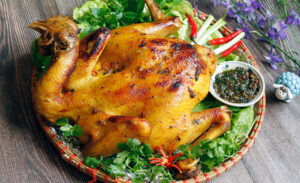 Mac khen, scientific name: Zanthoxylum rhetsa, is a typical spice in the northwestern mountainous region, used to differentiate the grilled chicken here from similar dishes in many other localities. The chicken is grilled over charcoal, the fire is not too big. When grilling, there is no need to brush on more fat because the chicken fat will melt out by itself. When the meat is firm, brush on more mac khen spice on the outside of the skin.
Mac khen, scientific name: Zanthoxylum rhetsa, is a typical spice in the northwestern mountainous region, used to differentiate the grilled chicken here from similar dishes in many other localities. The chicken is grilled over charcoal, the fire is not too big. When grilling, there is no need to brush on more fat because the chicken fat will melt out by itself. When the meat is firm, brush on more mac khen spice on the outside of the skin.
Don’t forget to dip it with cham cheo – is a typical dipping sauce of the Thai people in the Northwest mountains of Vietnam, for full flavor.
Pa Pinh Top (Grilled fish)
 This Dien Bien specialty dish has a rather strange name, but it is actually grilled fish such as carp, silver carp, grass carp. After being cleaned, the fish is cut along the spine. The spices are marinated directly and stuffed into the belly of the fish, including ginger, lemongrass, herbs and especially mac khen and bamboo shoots of cardamom, and the outside is rubbed with a layer of galangal powder and rice bran.
This Dien Bien specialty dish has a rather strange name, but it is actually grilled fish such as carp, silver carp, grass carp. After being cleaned, the fish is cut along the spine. The spices are marinated directly and stuffed into the belly of the fish, including ginger, lemongrass, herbs and especially mac khen and bamboo shoots of cardamom, and the outside is rubbed with a layer of galangal powder and rice bran.
Pa Pinh Top is grilled over charcoal. When grilling, use bamboo sticks to clamp the fish so that the flavor is more intense when the spices penetrate deep into each fiber of the meat and give off a fragrant aroma. The grilled fish is fragrant, sweet, and dry inside.
Braised duck with banana flowers
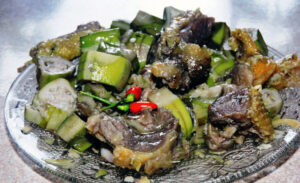 Braised duck with banana flowers is a rustic, easy-to-prepare dish of the indigenous people. After cleaning, the wild duck meat is marinated with spices such as chili, ginger, lemongrass, and mac khen, then wrapped in wild banana leaves and simmered for about 3 hours over low heat until the meat is cooked. Dien Bien people often use long-stemmed wild banana flowers because this type is more delicious, has a sweet taste, less latex, and is less astringent.
Braised duck with banana flowers is a rustic, easy-to-prepare dish of the indigenous people. After cleaning, the wild duck meat is marinated with spices such as chili, ginger, lemongrass, and mac khen, then wrapped in wild banana leaves and simmered for about 3 hours over low heat until the meat is cooked. Dien Bien people often use long-stemmed wild banana flowers because this type is more delicious, has a sweet taste, less latex, and is less astringent.
Although the dish does not look attractive on the outside, the aroma is fragrant right from the moment the banana leaves are opened.
Steamed minced pork in banana leaves
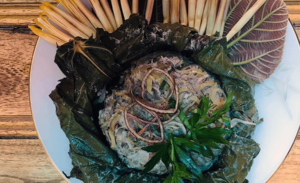 A simple dish, as the name suggests, is made from minced pork marinated with spices and then wrapped in banana leaves, steamed for about an hour until cooked and ready to eat.
A simple dish, as the name suggests, is made from minced pork marinated with spices and then wrapped in banana leaves, steamed for about an hour until cooked and ready to eat.
One of the important things that makes the dish delicious is that the meat must be fresh and fragrant. The dish is simple but easy to eat and easy to remember thanks to the aroma of the meat mixed with the aroma of the banana leaves, the meat is soft and fatty, sticking together.
Source: collected by An
Follow us for the best deal with Vietnam package tours and visa services!
